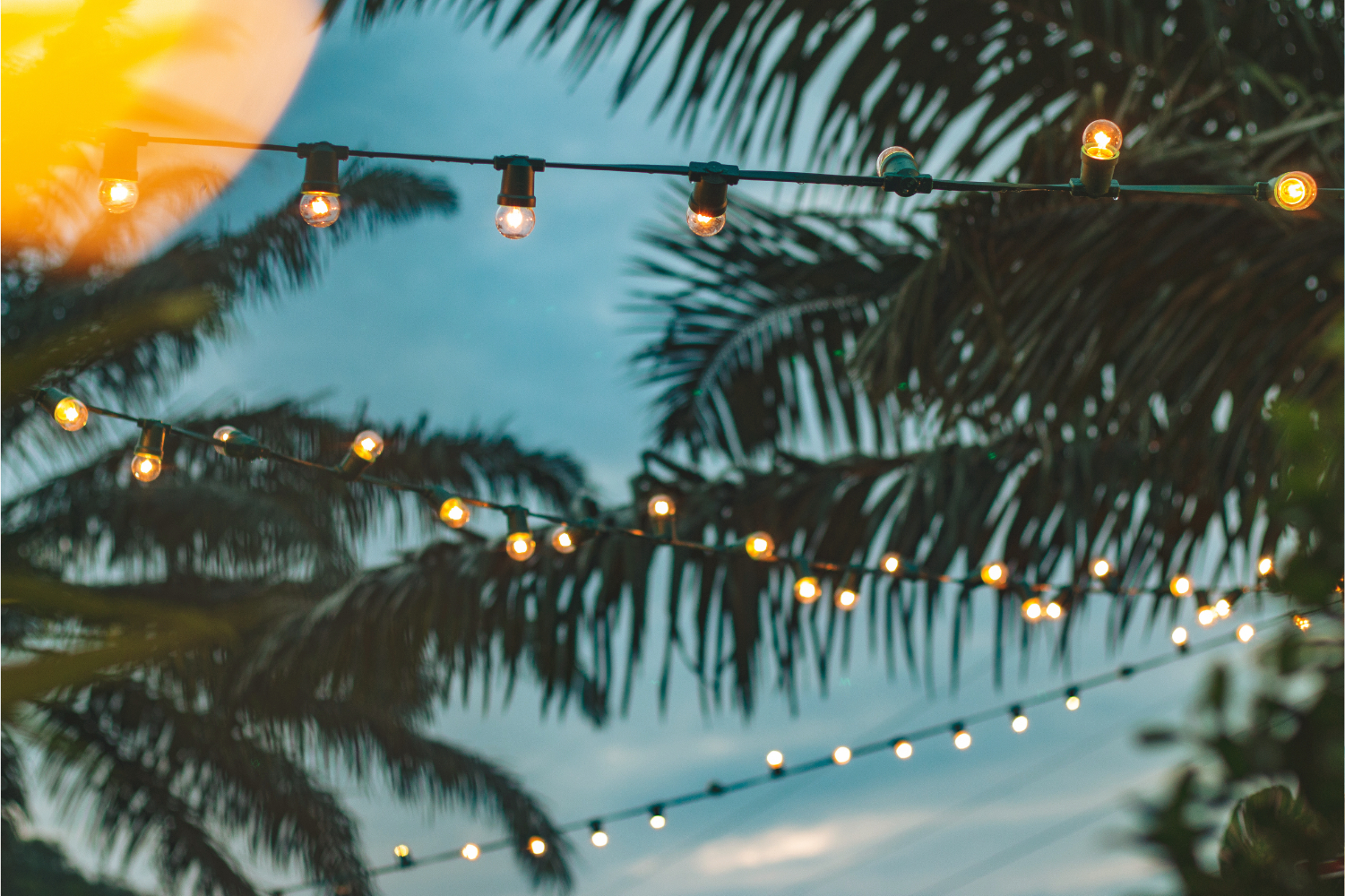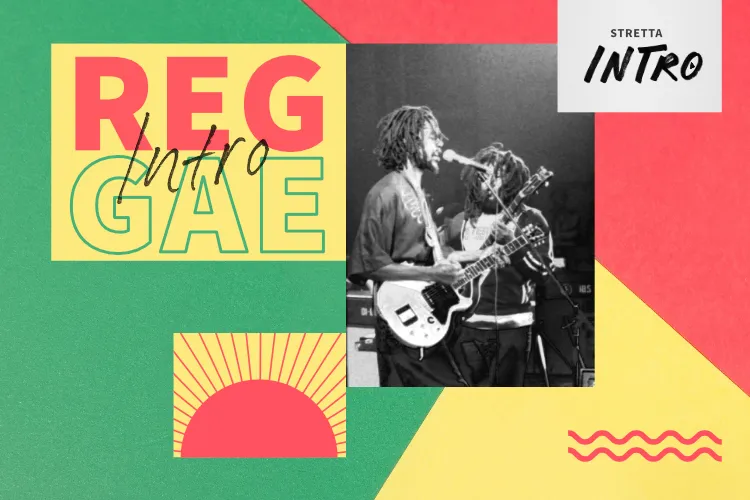by Christian Geiger (06/17/2022)
Reggae – these are summer vibes on the always sunny Caribbean island of Jamaica, Bob Marley, dreadlocks, and marijuana. While these common clichés are not unfounded, they only reflect a very small part of the music style. Christian Geiger takes a journey through the history of reggae (through ska and rocksteady) and answers the question: What exactly characterizes the style?

Reggae is the export hit of Jamaica, the voice of the Rastafari faith, and has been part of UNESCO's Intangible Cultural Heritage since 2018. Festivals like the local Summerjam or the Spanish Rototom Sunsplash attract tens of thousands of reggae fans to the big music stages every year.
The music genre is now globalized: Whether in Germany, the USA, New Caledonia, or China, reggae bands are making music all over the world. All this originated on the small island of Jamaica, which is only about half the size of the German state of Hesse and has about half as many inhabitants as Berlin.
The starting point of reggae's development was in the 1950s in Jamaica. At that time, American rhythm & blues, merengue, Latin jazz, and local mento, the traditional Jamaican folk music, were extremely popular.
However, only a few Jamaicans had access to music, as they lacked the money for records, a radio, or admission to a nightclub. The solution: freely accessible discos under the open sky, called soundsystems.
Initially, these were nothing more than speakers mounted on a cart along with a record player, which the operators fed with records imported from the USA. The soundsystem events, known as dances, suddenly offered a large part of the Jamaican population the opportunity to enjoy music.
In the following years, the business flourished, and the dances became a place of social exchange with food, drink, discussion, and, of course, music and dance. The high demand led to more and more soundsystems, resulting in increasing competition.
To keep their dance-hungry audience entertained and stand out from the competition, the organizers tried to offer exclusive music tracks. However, continuously ensuring the time- and cost-intensive import of new records was expensive. Additionally, fewer new R&B records were being released in the USA as rock 'n' roll gradually spread there – a new music style that found little favor among the Jamaican population.
Sound engineers who entered the soundsystem business had an idea: they produced their own records with new music in local recording studios. However, this strategy only saved the business for a short time, as Jamaicans soon craved something new. This led to a stylistic shift at the end of the 1950s.
Local bands, who played the previously demanded music styles in the recording studios for the soundsystems, simply mixed all the elements of the popular music in Jamaica into something new: rhythm & blues, merengue, Latin jazz, and mento gave birth to ska.
With ska, the first original Jamaican popular music emerged, sounding so new and different that it became the dominant music style at the dances. The new stylistic element of ska was the offbeat: the accentuation of the chords between the beats by piano, guitar, and usually a brass section, which proved to be the characteristic of all Jamaican popular music for the following decades. The offbeat was accompanied by the drums and a walking bass.
Pioneers like Prince Buster, Desmond Dekker, or The Skatalites played a mostly euphoric, fast, and driving sound that sounded like this:
We use YouTube to embed video content. This Google service has its own cookies and may collect data about your activity. You can find more information in the data protection declaration of the provider. We need your consent to display YouTube videos:
Show YouTube contentIn addition to the stylistic innovations, the socio-political context at the time of ska's emergence was the second main ingredient for its success.
Jamaica had been a British colony since 1655 and only gained independence in 1962. The national consciousness of the Jamaican population at that time was strong, and an unprecedented sense of optimism swept the island.
With ska, a self-determined music style emerged at the end of the 1950s, coinciding with political independence from Britain, giving the Jamaican population a musical identity. Most of the productions of this time expressed the hopeful feeling of life and the great expectations of the newly gained freedom of the island state. These themes were the driving force behind the success.
The heyday of ska, however, was short-lived. The audience's desire for constant new music and the struggle for the exclusivity of the soundsystems continued after independence.
A heatwave in Jamaica in the mid-1960s, so the legend goes, finally set in motion what logically had to follow: new sounds. Above all, slower sounds were needed to dance more comfortably in the heat of the night.
These desires gave birth to rocksteady, which is understood as a slower version of ska. With its pioneering stylistic innovations, rocksteady laid the decisive foundation for reggae.
Just like ska, rocksteady was a music style dominated by offbeat emphasis. But that was where the obvious similarities ended, as there were innovations in both instrumentation and the interplay of the instruments.
New instruments, such as the electric organ and the electric bass, which replaced the double bass, entered the standard band lineup. The use of brass was now limited to short melodic interjections. The walking bass from ska was replaced by rhythmically and melodically memorable figures that engaged in an interplay with other instruments through targeted pauses.
The most important innovation was in the drums. In the "one drop" rhythm, which significantly characterized rocksteady and later reggae, the first beat of a measure was unaccented, and the snare sounded with a rimclick simultaneously with the bass drum on beats 2 and 4 of a measure.
The shift in drum emphasis resulted in a new sound aesthetic that has been preserved in reggae to this day. Although the heyday of rocksteady lasted only three years, from 1966 to 1968, it was stylistically very significant. You can hear how rocksteady sounded from stars like Desmond Dekker, Alton Ellis, or The Paragons here:
We use YouTube to embed video content. This Google service has its own cookies and may collect data about your activity. You can find more information in the data protection declaration of the provider. We need your consent to display YouTube videos:
Show YouTube contentSka provided the offbeat accentuation, and rocksteady the one drop. When the tempo of the songs slowed down even more around 1968, reggae was set.
Essentially, all characteristics of rocksteady were adopted, with only minor adjustments. The bass evolved into the leading and most important instrument in reggae. As the tempo of reggae was even slower, and the syncopated bass and one drop created longer pauses, there was sonic space to be filled. This task was taken over by guitar and organ, with the guitar adding a sixteenth note after the offbeat, and the organ framing the offbeat with a sixteenth note before and after – and it sounds like this:
We use YouTube to embed video content. This Google service has its own cookies and may collect data about your activity. You can find more information in the data protection declaration of the provider. We need your consent to display YouTube videos:
Show YouTube content
We want to examine what makes reggae musically unique, which songs are considered absolute classics, and the typical roles of individual instruments, so you can try out your instrument at the next reggae jam. An introduction with many audio examples.
read moreReggae formed a fruitful relationship with the Rastafari faith, which had emerged in the slums of Kingston, in the 1970s, bringing forth roots reggae – the genre's golden age.
The Rasta lyrics, characterized by criticism of the capitalist system of the western world, the demand for "equal rights" for the global black population, and the drive for freedom, struck a chord with the times.
In 1973, The Wailers released the album Catch a Fire in collaboration with music producer Chris Blackwell. It became an instant international success, and soon the whole world knew Bob Marley and the new reggae style, with other stars like Steel Pulse, UB40, Groundation, Chronixx, Gentleman, or Alpha Blondy becoming famous.